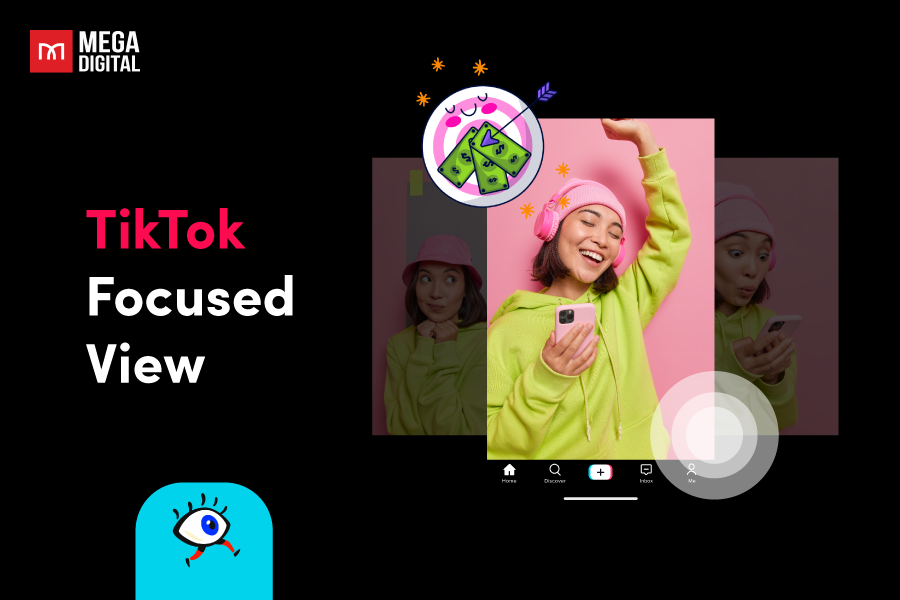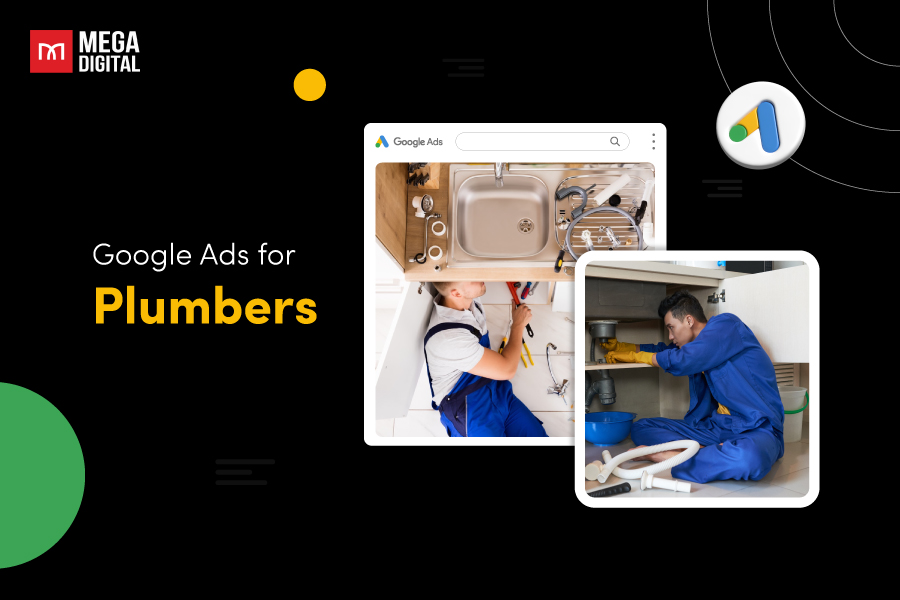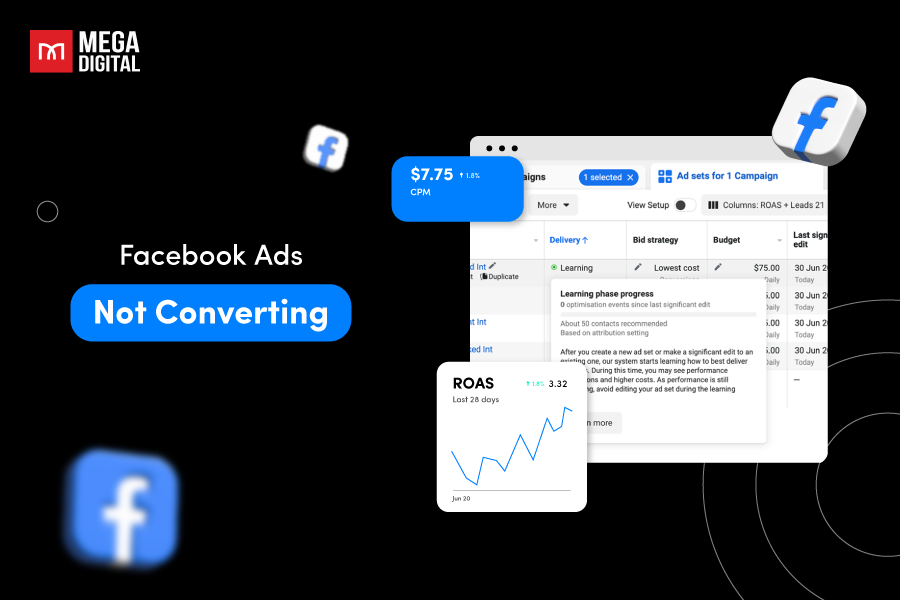Facebook is full of options for your advertising desires, and Facebook Collection Ads are among the top picks for those looking to display multiple products, tell a story, or create engagement with viewers. Think of Collection Ads as interactive mini-catalogs within Facebook feeds. They’re more than just static images; they’re immersive experiences that drive viewers straight to your online store. In this article, I will provide all the basics of Facebook Collection ads and how to leverage this powerful advertising tool to its fullest potential.
- What are Facebook Collection Ads?
- All Facebook Collection ads templates
- Facebook Collection Ads Specs
- Why Use Facebook Collection Ads Over Regular Ads?
- How to Create Collection Ads on Facebook?
- Collection ads and Carousel ads: What’s the difference and which one to use?
- Strategies to Optimize Your Facebook Collection Ad
What are Facebook Collection Ads?
Collection Ads are a mobile-only Facebook ad type that includes a cover image or video, followed by three (or more) smaller images placed below. These ads make it easy for people to discover, browse, and purchase products and services from their mobile devices in a visually immersive way.

Each Collection Ad features a primary image or video with three smaller accompanying images underneath in a grid-like layout. When users interact with a Collection Ad, they are taken to an “Instant Experience,” which is a full-screen, mobile-optimized experience within the Facebook app. This provides a seamless and immersive environment for users to browse and explore the showcased products.
All Facebook Collection ads templates
To promote your business, you can choose among four currently available Collection ad templates.
- Instant Storefront: this template allows you to display your products in a grid layout, making it easy for users to browse through your offerings.
- Instant Lookbook: this template is designed to show your products in action. It’s ideal for businesses that want to showcase how their products can be used.
- Instant Customer Acquisition: if your goal is to drive conversions on your mobile landing page, this template can be a good choice. It’s designed to encourage users to take action.
- Instant Storytelling: this template allows you to tell a strong brand story while also encouraging product sales. It’s a great way to engage users and build brand awareness.

Facebook Collection Ads Specs
Your Collection ads will only appear on Facebook and/or Instagram mobile feeds. So make sure that you meet all technical Facebook ads sizes of this ads below when crafting your ads:
Collection Ad Visuals Specifications
There are three types of visual elements you can add to your Collection ads: video, images, and slideshows.
Video
Follow these video ad requirements if you decide to add a video to your Collections:
- Video format: Progressive scan, high profile preferred, square pixels, fixed frame rate, H.264
- Image ratio: 1:1 or 16:9
- Audio quality: Stereo AAC, 128 kbps
Images
Here are the specifications for images added to your Collection ads:
- Image size: 1200×628 pixels
- Image ratio for Facebook feed: 1.9:1
- Image ratio for Instagram feed: Square (1:1), full landscape/horizontal (16:9), and slideshow.
Slideshows
Here are the guidelines if you want to add slideshows to your Collections:
- Video quality: High profile preferred, square pixels, progressive scan, fixed frame rate, H.264
- Aspect ratio: 1:1 or 16:9
- Audio format: Stereo AAC, 128 kbps
- File format: MP3, M4A, FLAC, OGG, WAV
- If you want to incorporate a song in your slideshow Collection ad, make sure you don’t violate any copyrights.
Dimensions can vary, but remember to prioritize high-quality visuals.
Collection Ad Copy Specifications
When crafting your ad copy, use these specifications:
- Headline (for 4 image cards): Up to 25 characters (keep it concise and compelling)
- Body (above the main visual): Up to 90 characters (highlight key features and benefits)
- Link description: Up to 30 characters (encourage clicks with a strong CTA like “Learn More” or “Shop Now”)
Showcase up to 5 products with individual images, titles, descriptions, and prices.
Why Use Facebook Collection Ads Over Regular Ads?
Sure, traditional Facebook ads can do wonders. But when you have a wide range of products or want to tell a richer story, Collection Ads step up their game. Here’s why you should use this ad type for your marketing campaigns:
Showcase product variety
Unlike regular ads, Collection Ads are designed to feature multiple products or services in a single ad. This is particularly beneficial for businesses with a diverse range of offerings. For instance, a clothing retailer can showcase different styles of dresses, shoes, and accessories all in one ad. This gives potential customers a broader view of your product range without bombarding them with individual ads, increasing the likelihood of them finding something they like.
Immersive mobile experience
Collection Ads are designed with mobile users in mind. When a user clicks on a Collection Ad, they’re taken to an Instant Experience, a full-screen landing page inside Facebook. This page can include videos, slideshows, or carousels, providing a rich, engaging experience. This immersive format keeps users within the Facebook app, reducing load times and improving the user experience.
Enhance engagement
Unlike static images, Collection Ads come alive with video thumbnails and captivating product descriptions. The interactive nature of Collection Ads encourages users to engage with your content. Users can scroll through the products, click on items of interest, and even make a purchase without leaving Facebook. This interactive shopping experience can lead to higher engagement rates, increasing the likelihood of conversions.
Streamline the shopping journey
Collection Ads streamline the shopping process. When a user clicks on a product in the ad, they’re taken directly to the product page on your website or app. This reduces the number of steps a user has to take to make a purchase, which can help reduce drop-off rates and increase conversions.
Customizable templates
Facebook provides several templates for Collection Ads, each designed for different business goals. For example, the “Sell Products” template is designed to showcase products from your catalog, while the “Tell a Story” template is designed for brand storytelling. These templates can be customized with your images, videos, and text, allowing you to create ads that align with your brand and business goals.
How to Create Collection Ads on Facebook?
Be sure that you have a Facebook ad account ready for use. If not, you can check out our simple guide on how to create a Facebook ad account.
Creating a Facebook Collection Ad involves several steps. Here’s a detailed, step-by-step walkthrough to assist you in the process:
Step 1: Set up your product catalogue
This is the initial step you need to do. If you already have a product catalogue, you can skip this step.
First, head to the Commerce Manager. Choose a way you want to sell your products by clicking on Create a catalogue.
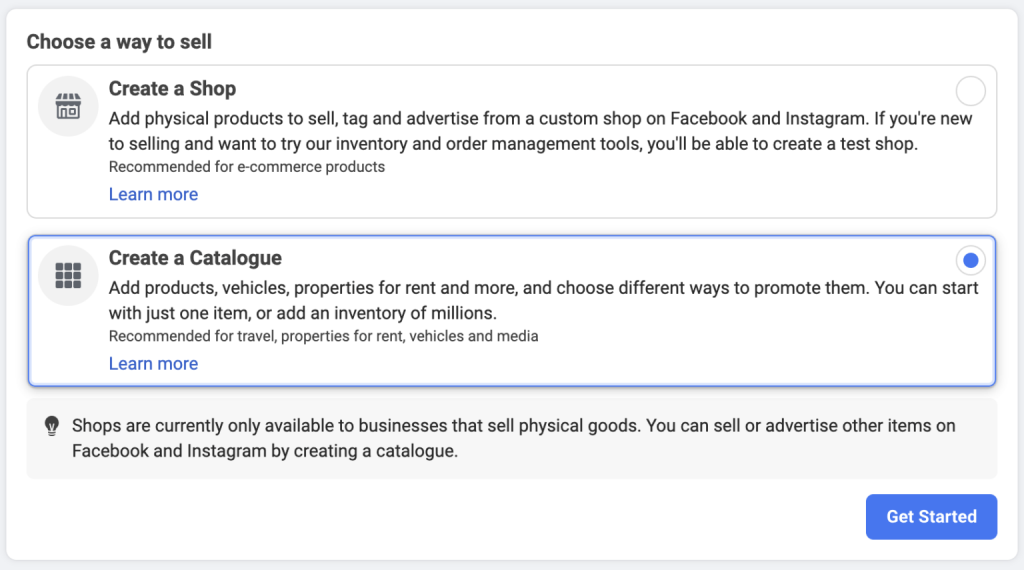
Choose the type of inventory you’re working with for your catalogue and click Next.
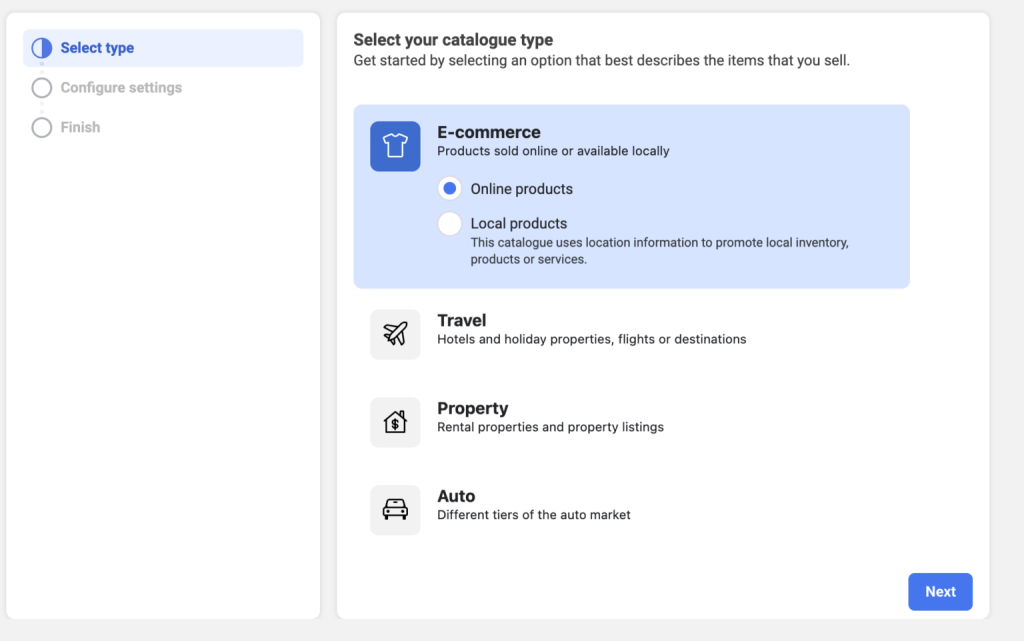
Go on with configure settings. You can either add your items manually by clicking on Upload Product Info or upload your data automatically by selecting Connect a partner platform.
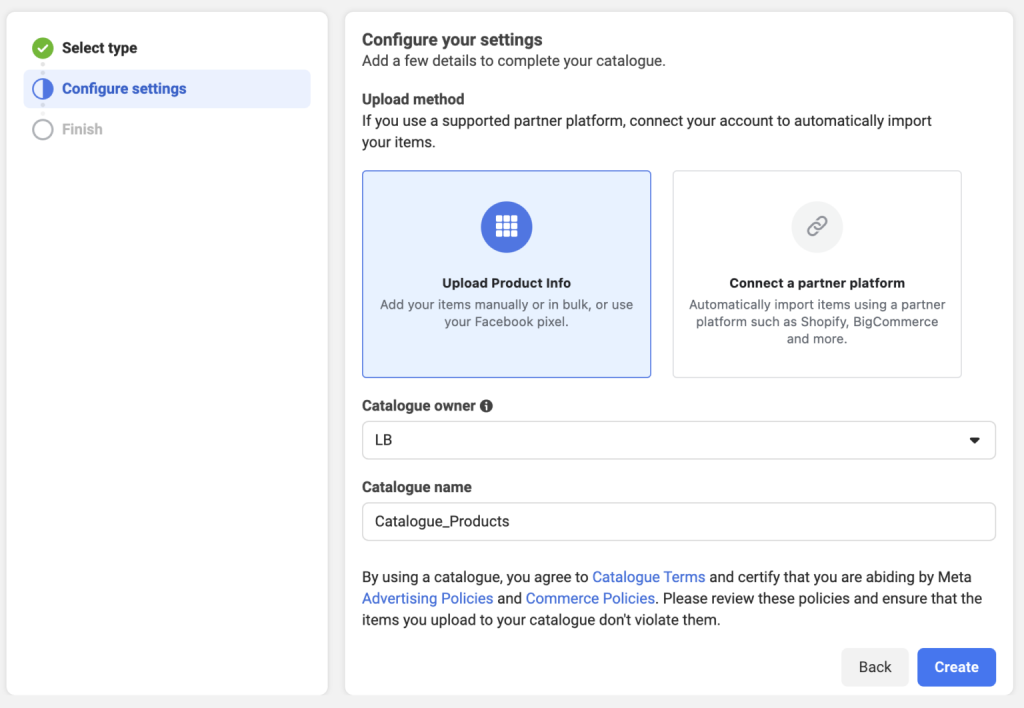
Select the business account associated under the Catalog owner tab. Name your list and click Create to finalize your new catalog.
After creating your catalog, you can add your items by clicking on View Catalog and then, Add items. Choose your preferred method to upload your item lists.
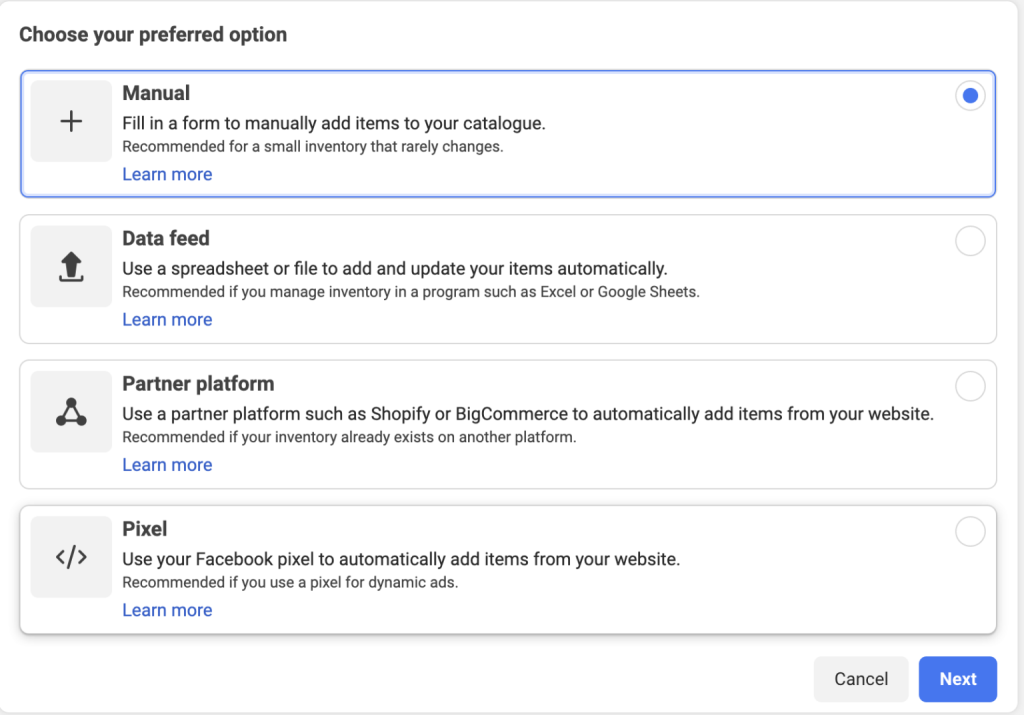
Step 2: Create a new ad
Start by logging into your Facebook account and navigating to the Ads Manager.
Click on the green ‘+ Create’ button to start a new ad.
Choose an objective for your Collection ads campaigns. Bear in mind that Collection ads support the following marketing objectives in Ads Manager:
- Traffic
- Conversions
- Catalog sales
- Store traffic
If you choose any other objective aside from these 4 above, you’ll have to pick another ad format.
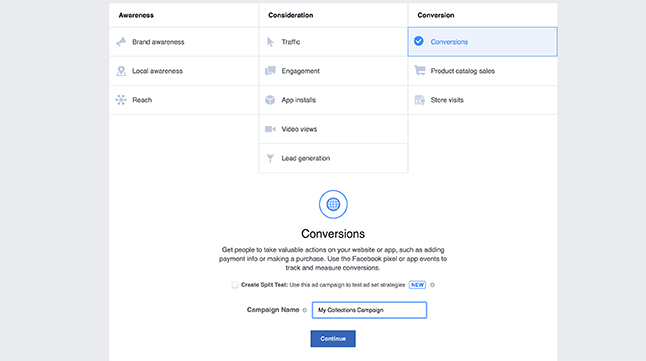
Step 2: Set up your ad set
In the ‘Ad Set’ section, you’ll need to define your audience, budget, and schedule. You can also choose your Facebook Page and Instagram account here.
Step 3: Choose the ad format
Scroll down to the ‘Format’ section and select Collection.
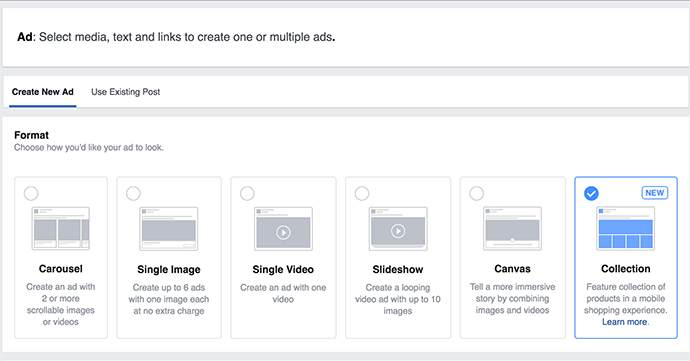
Step 4: Select a template and add your content
Next, select a template for your Collection ads. As I have said earlier, Facebook offers several templates for Collection Ads, including ‘Instant Storefront’, ‘Instant Lookbook’, ‘Instant Customer Acquisition’, and ‘Instant Storytelling’. Choose the one that suits your needs the most.
Now it’s time to add your content. You can upload images, videos or slideshows. Remember, the first image or video will be your ad’s ‘cover’.

Next, you’ll want to select your Facebook page and write a headline and text for your ad.
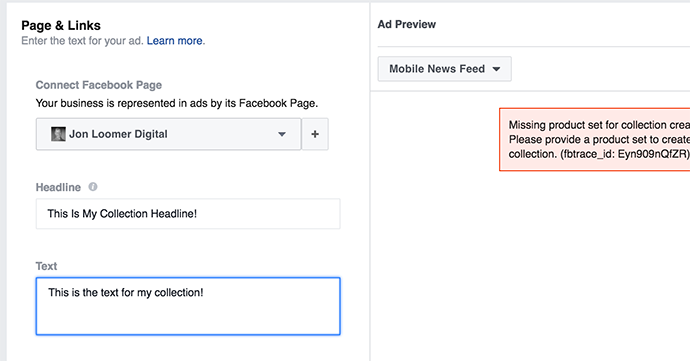
Step 5: Add your products
Earlier, we created a product catalogue. You can add them manually or use a product catalog if you have one set up.

Name your product set, and then determine how you’re going to isolate these products.
Once you’re happy with your ad, click on Preview to see how it will look. If everything is as you want it, click Publish to launch your ad.
Collection ads and Carousel ads: What’s the difference and which one to use?
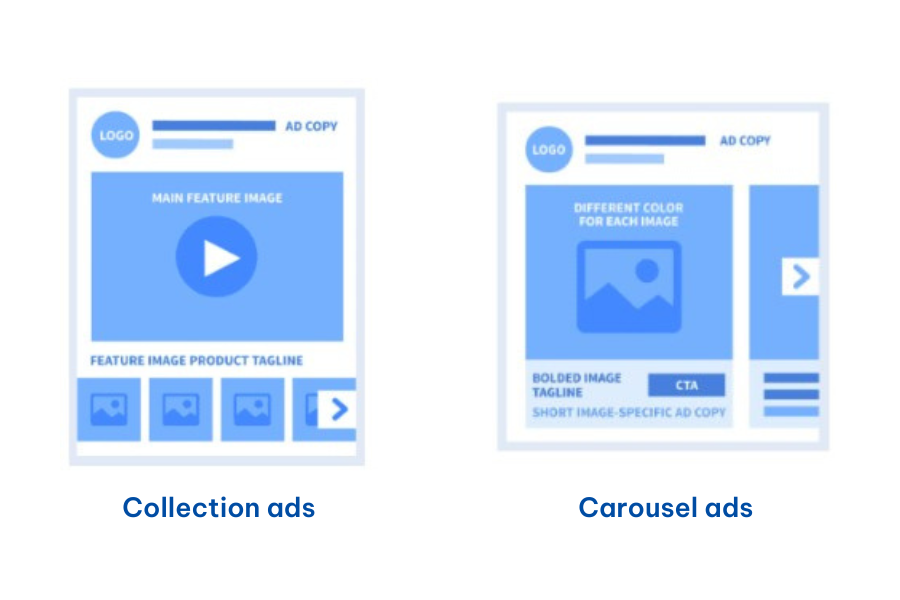
Both Facebook Collection Ads and Carousel Ads are dynamic options for showcasing multiple products or experiences within a single ad, but they cater to different needs and offer distinct user experiences. Choosing the right format depends on your campaign goals and the type of message you want to convey.
| Collection Ads | Carousel Ads | |
|---|---|---|
| Purpose | Make it easier for users to seek and purchase goods and services on a company’s app or website via Facebook. | Showcase two or more calls to action, links and headlines, or images in one product advertisement. |
| Ad Format | Multi-card ad that includes a cover image or video with multiple products shown underneath. | Swipe option that will showcase up to 10 different cards. |
| Platforms | Only shown on mobile. | Show on both desktop and mobile screen. |
Strategies to Optimize Your Facebook Collection Ad
Optimizing your Facebook Collection Ad for conversions involves several strategies. Here are some valuable tips from Mega Digital to help you get the most out of your ad:
Use high-quality visual elements
The visuals you use in your ad are the first thing people see. The visual appeal is crucial in attracting users’ attention. Images or videos of higher quality can make your products look more appealing and professional. Ensure that the images are clear and highlight the key features of your product. If possible, use a professional photographer or a high-resolution camera for product photography. Also, ensure that all the visual elements you use, regardless of their format, are optimized for mobile viewing, as most Facebook users access the platform via mobile devices.
Write compelling ad headlines
The headline is often the first thing that users read. It should be engaging, relevant, and give users a reason to click on your ad. Keep it short and simple, but compelling. Use action words and convey a sense of urgency or exclusivity to encourage users to act immediately. For example, instead of “Our New Collection”, you could use “Limited Edition Collection – Shop Now!”.
Incorporate a clear Call-to-Action (CTA)
A clear CTA provides users with explicit instructions on what steps to take next, eliminating any confusion or guesswork. CTAs also guide users toward a desired action, such as making a purchase, signing up for a newsletter, or downloading a resource. Therefore, use action-oriented text like “Shop Now”, “Learn More”, or “Sign Up”. Make sure the CTA stands out visually in your ad. You can do this by using a contrasting color for the CTA button or by surrounding it with white space.
Target the right audience
Facebook’s detailed targeting options allow you to reach the audience most likely to be interested in your products. Spend time understanding your customer demographics, interests, and behaviors. Use this information to create a targeted audience for your ad. Remember, a well-targeted ad can lead to higher engagement and conversion rates.
Test different ad elements
Different elements of your ad can impact its performance. This includes the images, headlines, CTAs, and even the audience targeting. Experiment with different variations of these elements to see what works best. Facebook’s split testing feature allows you to test different ad variations and provides detailed reports on their performance.
Conclusion
In conclusion, Facebook Collection Ads offer a unique and effective way for businesses to engage with their audience and drive conversions. By understanding how to properly utilize this tool, businesses can significantly enhance their social media marketing strategy.







